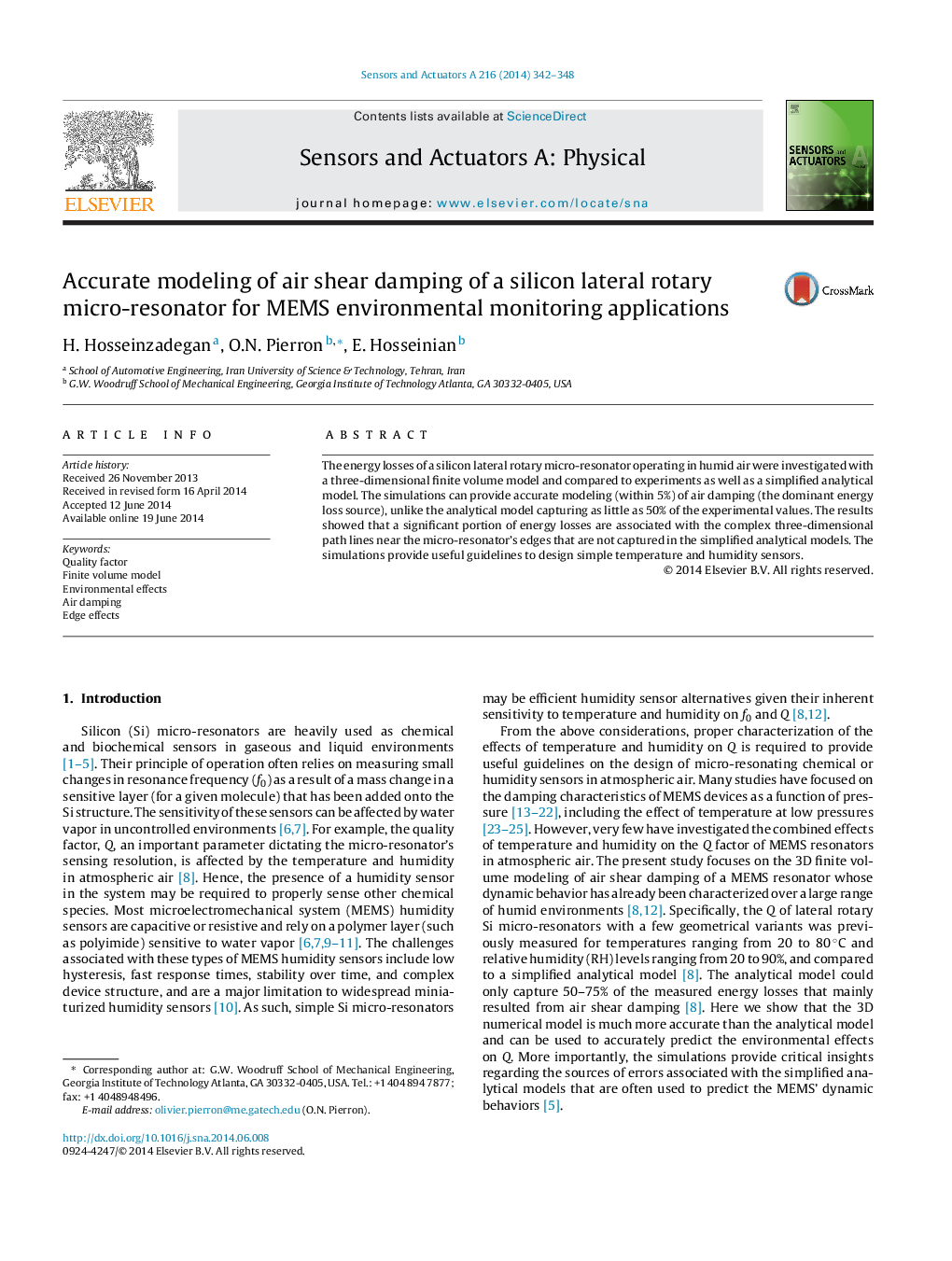| Article ID | Journal | Published Year | Pages | File Type |
|---|---|---|---|---|
| 737028 | Sensors and Actuators A: Physical | 2014 | 7 Pages |
•A finite volume model accurately predicts the environmental effects on Q for MEMS.•Compared to an analytical model, the numerical model captures more energy losses.•The simulations provide useful guidelines to design simple T and humidity sensors.
The energy losses of a silicon lateral rotary micro-resonator operating in humid air were investigated with a three-dimensional finite volume model and compared to experiments as well as a simplified analytical model. The simulations can provide accurate modeling (within 5%) of air damping (the dominant energy loss source), unlike the analytical model capturing as little as 50% of the experimental values. The results showed that a significant portion of energy losses are associated with the complex three-dimensional path lines near the micro-resonator's edges that are not captured in the simplified analytical models. The simulations provide useful guidelines to design simple temperature and humidity sensors.
